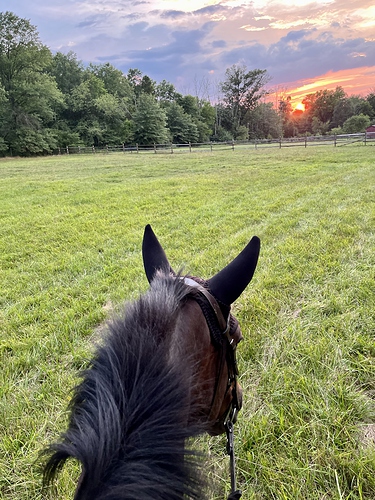@candyappy, all my experiences and information says the pastures are better when rotated, even big pastures. My horses looked OK, shiny, good flesh, when I had 2 on 5 acres. But the dirt showed a lot between grass clumps, some very over grazed places.
After making the field 2 pastures, rotating when down to 5 inches, mowing, the pastures are much better covered. Grazing more horses on the small fields, half a day, and we still don’t get the bald spots or over grazing anymore. Horses are living off the grass, not hay, since I want fields productive as possible.
I do more for my fields now that I know more. We fertilize yearly, add good seed, mow regularly. We added 7 acres along with now having 9 horses to graze. Fields look like good turf unless we are in drought or winter. Not much dirt showing between plants despite intensive grazing.
Maybe your horses are “fat enough,” so you don’t need or want maximum production. It does take time to keep them up. We think the return from good grazing is better for our horses, healthier, cost less in cash than hay, to have them looking and working with the grass diets. They are all kept at working weights, because they are athletes. No fat horses, no lamanitic or other dietary problems here, so free grazing 12-14 hours a day is not a problem.


